Supporting Scientists' Engagement with the Media
The survey sample was weighted by gender and academic field to represent the population as closely as possible. The measure of sampling error for questions answered by the full sample is plus or minus 5 percentage points.
This survey, conducted by SciOPS in partnership with AAAS SciLine, covers scientists’ perspectives on science communication and media engagement. This survey aims to understand scientists’ experiences with and opinions about interacting with the news media. The survey explores scientists’ past interview experiences, the benefits, and risks of interacting with media, as well as their perspectives about media communications at their universities. This page displays results from half of the survey, you can view the rest of the survey results here.
Question
|
# of Interviews |
Frequency |
|
0 |
36% |
|
1 |
18% |
|
2-3 |
22% |
|
4-5 |
7% |
|
6-20 |
10% |
|
>20 |
7% |
Over a third of scientists did not talk to the media at all, while 40% gave between 1-3 interviews over the past year.
Question
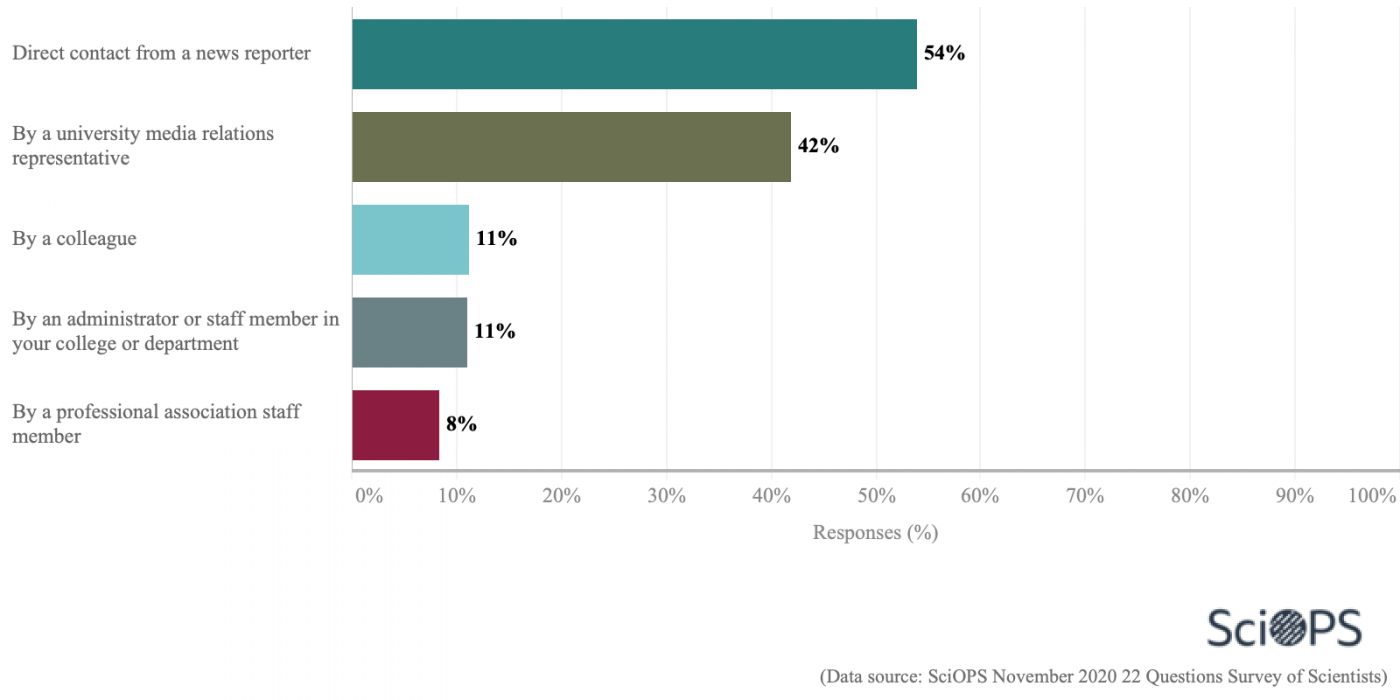
According to respondents, slightly more than half (54%) were contacted directly by a news reporter and 42% were contacted by a university media relations representative.
Question
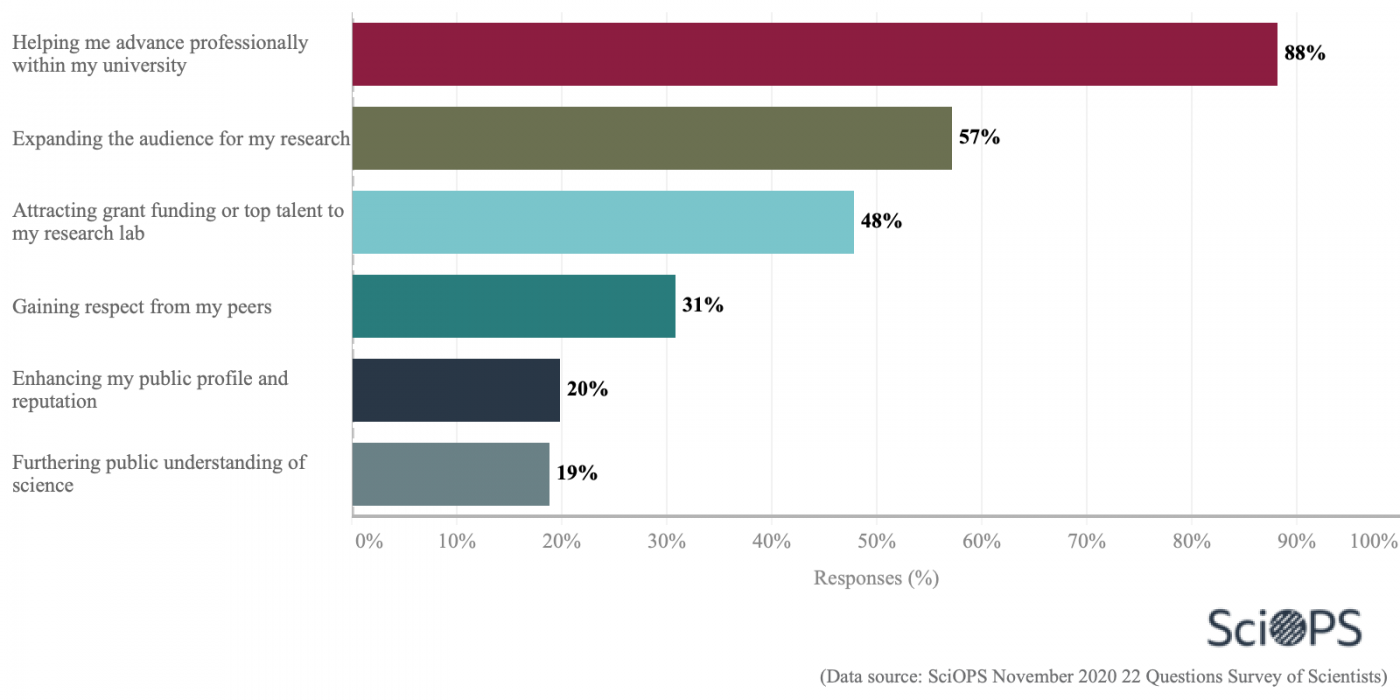
Scientists’ reported that the biggest benefit they saw from engaging with the media was to advance professionally within their university (88%).
This was followed by expanding the audience for their research (57%) and attracting grant funding or top talent to their research lab(48%).
Less than one-fifth (19%) of respondents indicated media interactions helped further public understanding of science.
Question
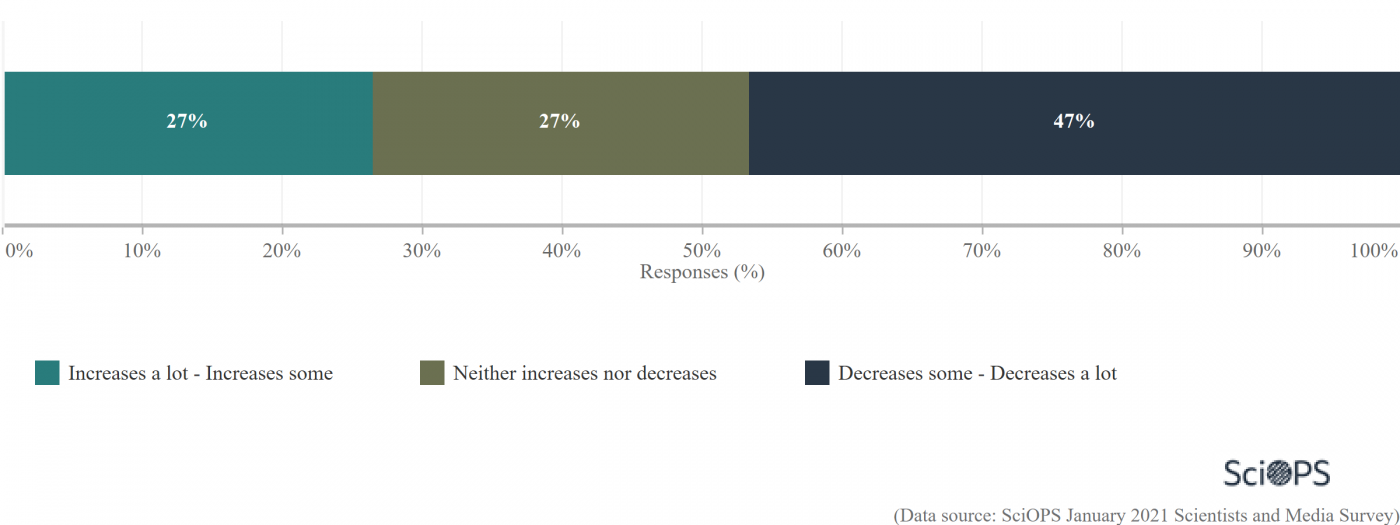
Almost half of the scientists (47%) have lost interest in engaging with media due to the politicization of scientific information. However, slightly more than a quarter of the respondents (27%), instead, reported an increased interest in media engagement.
Question
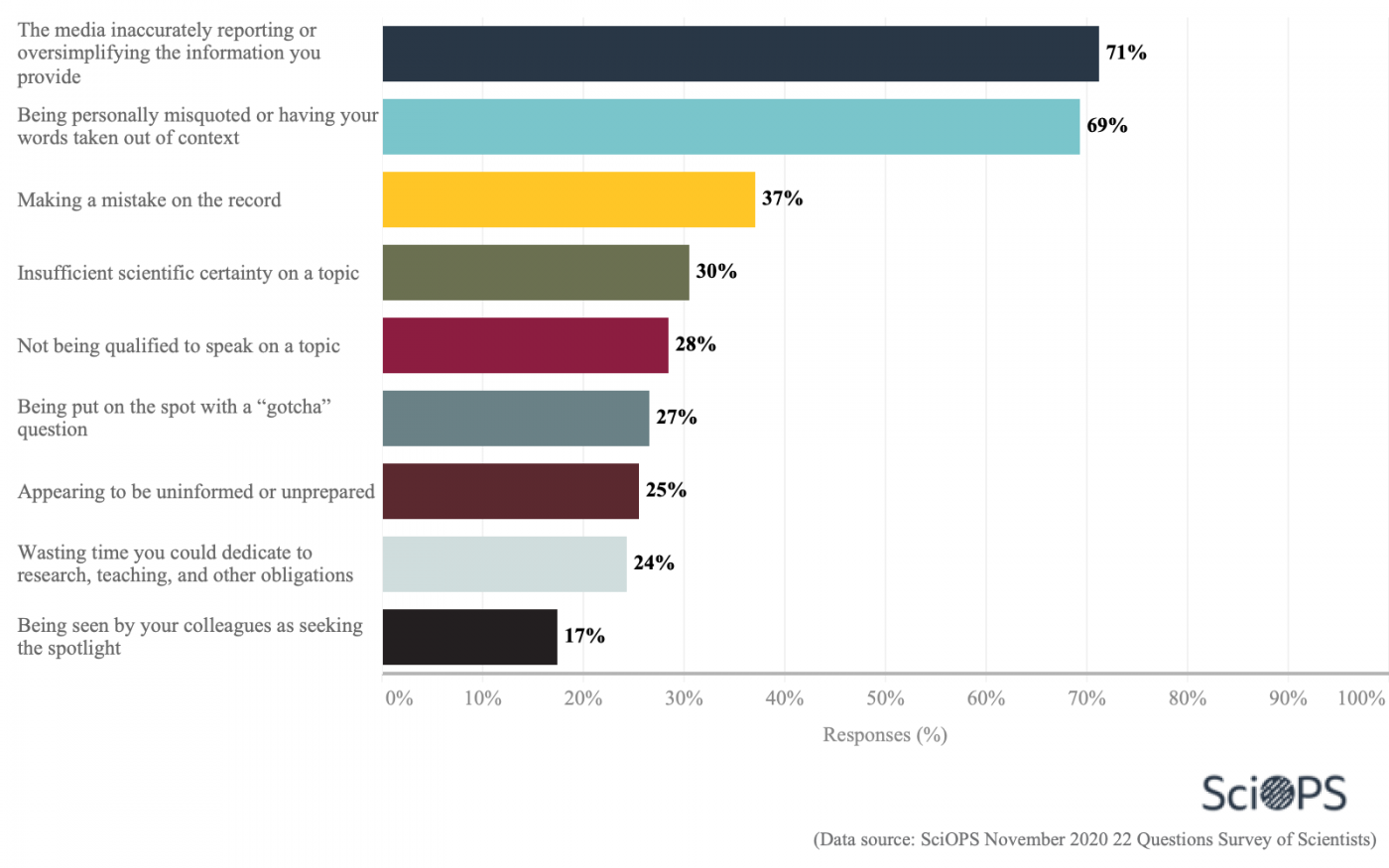
Respondents stated that the greatest potential challenges from interacting with the media are inaccurate reporting or oversimplifying the information provided (71%) and being personally misquoted or having their words taken out of context (69%).
Question
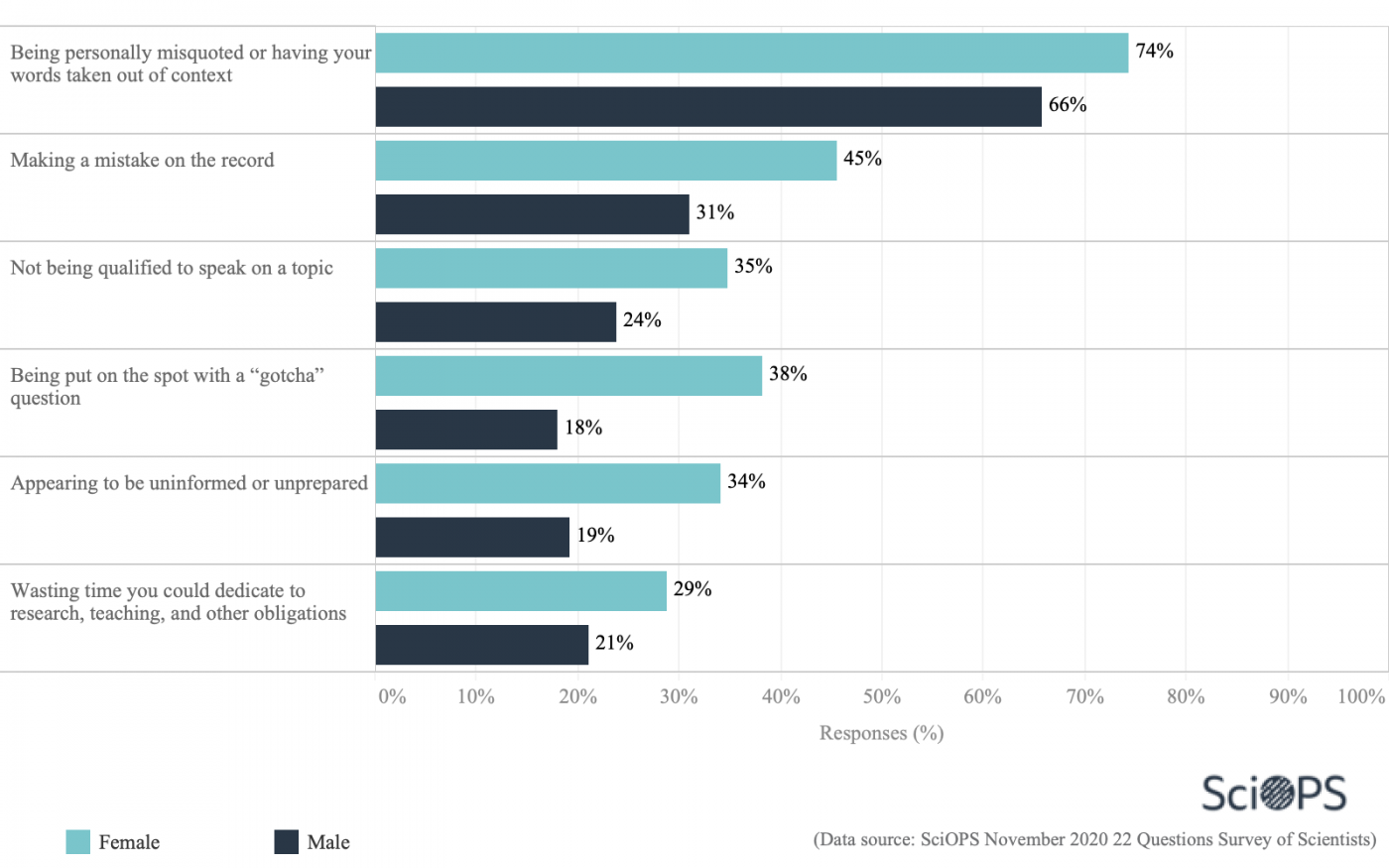
More women than men scientists listed being put on the spot with a “gotcha” question (38% female vs. 18% male), insufficient scientific certainty on a topic (39% female vs. 24% male), and appearing to be uninformed or unprepared (34% female vs. 19% male) as potential challenges. These findings were statistically significant.
Question
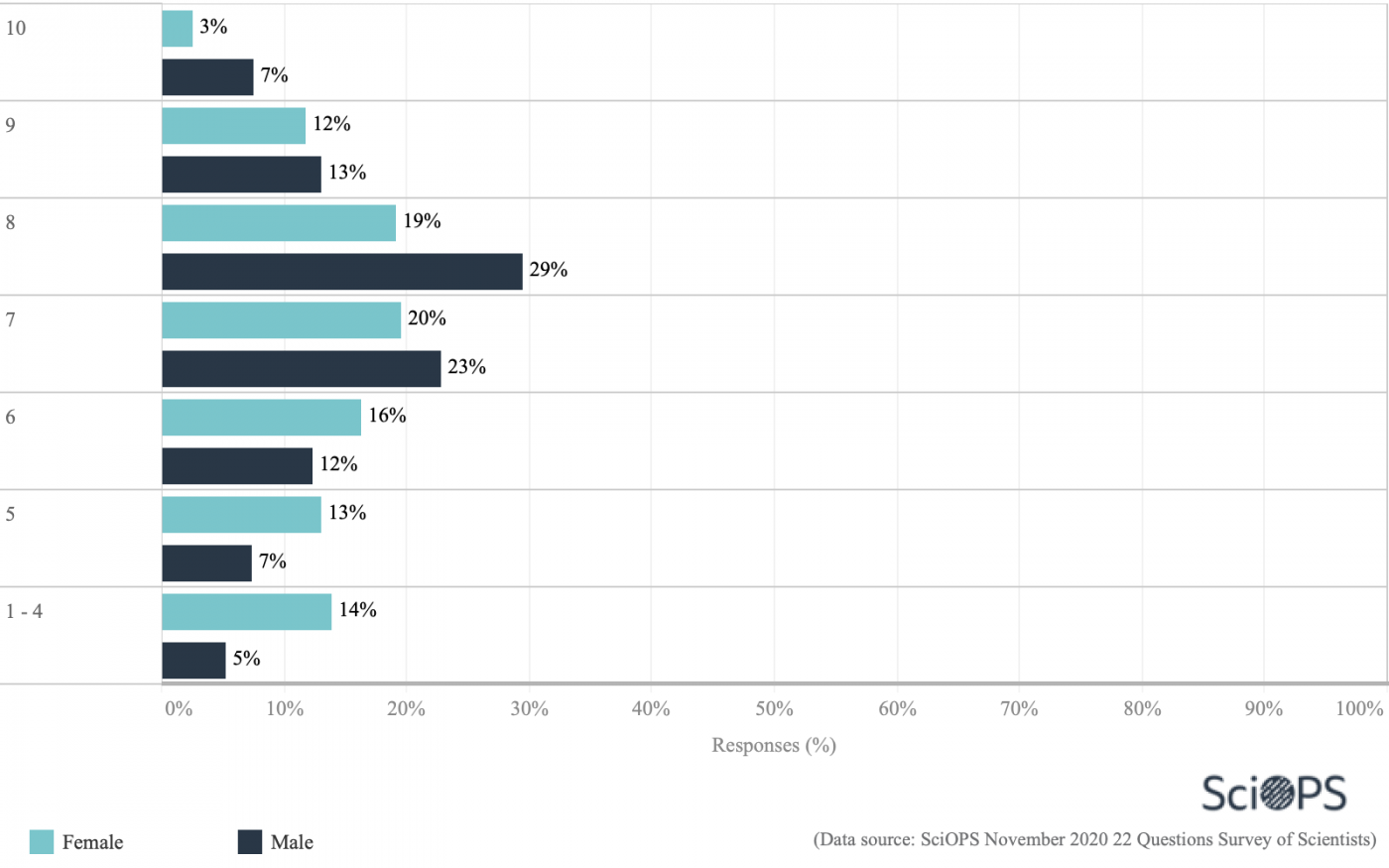
63% of scientists reported being highly confident (being a seven or higher) while about 18% reported having lower confidence in giving a successful interview (being five or lower).
A higher proportion of men (72%) reported being highly confident (being a seven or higher) as compared to women (54%).
Question
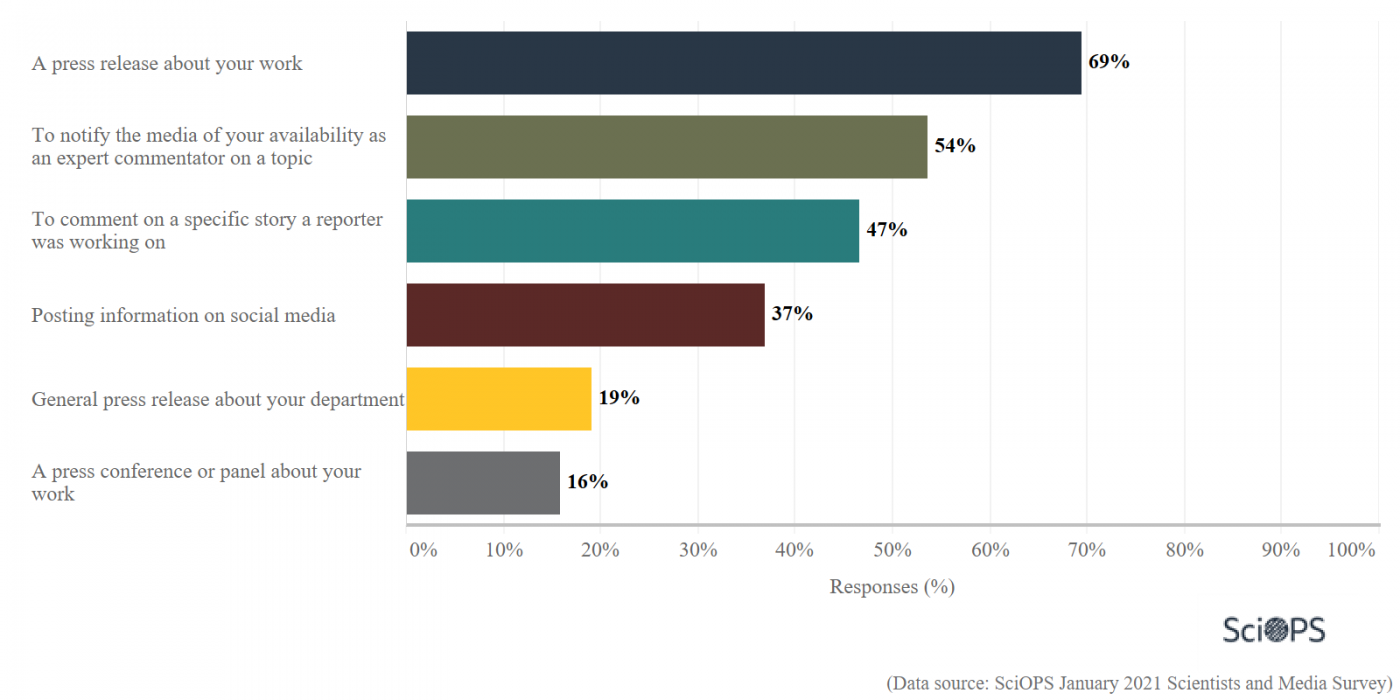
More than half of scientists (69%) worked with university staff on a press release about their work.
54% of the respondents notified staff of their availability to serve as an expert commentator on a topic.
More than one-third worked with university media staff on posting information to social media (37%) and to comment on a specific story that a reporter was working on (47%).
Survey Description
This national survey on science and media was conducted by the Center for Science, Technology and Environmental Policy Studies at Arizona State University and designed in collaboration with AAAS SciLine . The population for the survey represents a random sample of PhD-level faculty in four fields of science. Three fields– biology and genetics, civil and environmental engineering, and geography –were collected from 81 randomly selected Carnegie-designated Research Extensive and Intensive (R1) universities in the United States (US).
Public health faculty were collected from the full population of 62 universities with an accredited Public Health department. Public Health sub-disciplines included data science and statistics; health practice; science and medicine; social and behavioral sciences; organization, management and policy. The final sample included contact information for 3,303 scientists. A total of 508 usable responses were obtained, representing an AAPOR response rate (RR4) of 15.5%.
Sample weighting and Precision: the completed sample was weighted by the inverse of selection probabilities and post-stratified by gender and academic field to represent the population as closely as possible. A conservative measure of sampling error for questions answered by the full sample is plus or minus 5 percentage points. The survey was approved by Institutional Review Boards at Arizona State University and at the University of Illinois at Chicago.
